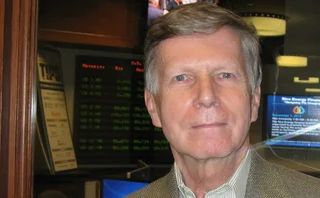Base metals house of the year: Macquarie Group
Energy Risk Asia Awards 2021

With its team of more than 40 professionals based globally – in Australia, Singapore, Shanghai, Tokyo, London, New York and Toronto – Macquarie Group has been committed to serving base metals clients for over 30 years. Focused on the metals markets in sales, financial and physical trading, and financing, the group offers clients a full spectrum of services, including risk management and hedging, financing and capital solutions, physical offtake and supply, and access to high-quality market research and analysis
“Our service runs all the way from mine financing [encompassing equity financing, senior/mezzanine financing and prepayments], through to working capital financing [includes bespoke trade financing, such as repo of base metal inventory held during a voyage or at warehouse], to comprehensive risk management in which Macquarie is a market leader in adopting and providing liquidity across new products/contracts including LME [London Metal Exchange] scrap, cobalt and aluminium premiums,” says Andrew McGrath, head of commodities and global markets, Asia.
“Running alongside these services is our cutting-edge market research and analysis to clients across the commodities spectrum, and then our physical trading capabilities, with Macquarie being one of the few banks that can take title to and trade physical metals, which allows us to actively buy and sell the physical product from tenders and to facilitate physical transactions with embedded hedging solutions,” says Ryan Mangan, head of metals and bulks trading.
One of the key elements that continues to differentiate Macquarie’s client service offerings from other banks is the close degree of integration of its highly rated Europe- and Asia-based research strategists into the group’s daily interactions with clients. Macquarie’s clients have direct access to this research team and its comprehensive network of market-tracking data, published reports, market models and price forecasts, via its dedicated metals market salespeople.
“This blend of financial and fundamental analysis enabled the team to identify early the potential for China’s Shanghai Futures Exchange aluminium market to trade at a premium to LME prices,” says Marcus Garvey, head of the metals and bulks strategy team. “Taking into account the extent and composition of relative positioning across exchanges, and then backing this up with the assessment that, contrary to common perception, China’s physical market was swinging into deficit, they were early into a trend that has upended the metal’s global trade flows,” he adds. “We are never afraid of making counter-consensus calls, having accurately challenged the notion that the world ex-China had meaningful available spare capacity in crude steel production as prices rose substantially.”
The second key element that separates Macquarie’s client service offerings from other banks is its commitment to the physical trading of the underlying base metals and ability to solve problems for clients that combine its hedging, financing and physical trading capabilities. This was evident, for example, during the past 12 months when Macquarie worked in partnership with a major Asian base metals producer to finance the constant flow of non-exchange deliverable aluminium products coming from the producer destined for their European distribution agent, and then ultimately to their end-consumers. Once shipped, Macquarie purchased the products and retained physical ownership during transit and subsequent storage in warehouses spread across multiple European countries. When required for delivery to consumers, Macquarie released the metal and was paid. In another example, Macquarie was able to utilise a variety of different skill sets to execute a complicated transaction for a client looking to source aluminium for a producer for investment purposes.
“The bespoke structure had elements of financing, premium risk management, physical logistics and optionality, and Macquarie was uniquely positioned to offer such a product and executed the transaction in a short timeframe,” says Peter Barnes, metals and bulks structuring and financing, London.
More on Risk management
Energy Risk at 30: Learning from the past
Energy Risk looks back at the seminal events and developments that have shaped today’s energy markets
Past disasters can prove the value of energy risk management
Analysing failures and losses at energy firms can underscore the value of consistent, high-quality risk management
How quants shaped the modern energy markets
The business models of today’s utility firms are built on quantitative analysis, but the introduction of these techniques in the 1990s was far from smooth
Interview: Vince Kaminski
Market veteran Vince Kaminski discusses the biggest risks to energy firms today and whether risk teams can ever prove their value
Mounting risk prompts refocus on integrated energy risk management
Energy firms are facing heightened risk due to shifting geopolitics, climate change and the energy transition. As market, credit and enterprise risks ramp up, the need for improved integrated risk management is growing, say risk managers
Energy supply chains seen as a growing risk
Supply chain risk is now a major concern, with some firms even viewing it as an existential threat, survey finds
Can behavioural science curb rogue traders… and compliance costs?
Instead of using surveillance to catch endless bad apples, experts urge banks to clean the barrel
Former regulator urges new approach to AI explainability
Ex-OCC chief Michael Hsu suggests shift from academic analysis to decision-based techniques







